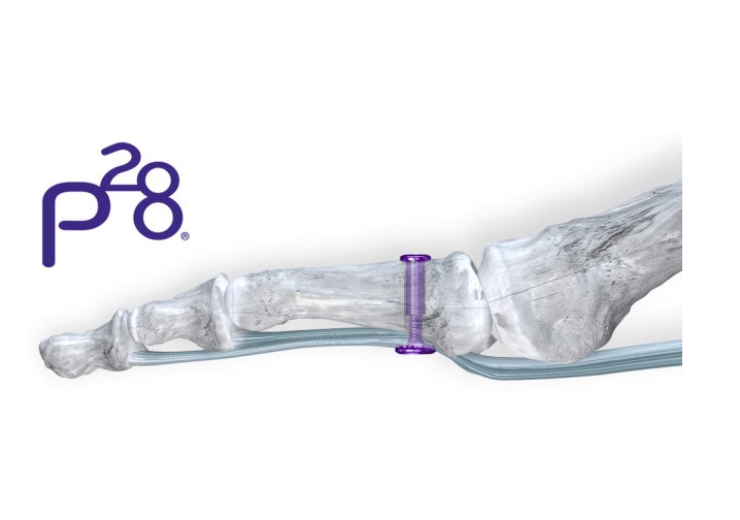The system requires a small incision plantarly which avoids the weight bearing surface and small incision dorsally to facilitate implantation, resulting in less swelling, pain, and scarring when compared to traditional approaches

TenoTac soft tissue fixation system (Credit: PRNewswire / Paragon 28, Inc.)
Paragon 28 launched the TenoTac Soft Tissue Fixation System in January 2019, providing surgeons the first and only dedicated system to address tendon transfers of the forefoot to correct contracted toes and repair plantar plate.
In contrast to traditional methods for flexor tendon transfers, TenoTac® facilitates correction without releasing tissue attachments distally by balancing plantar and dorsal tension. Plantar and dorsal tissue distal to the TenoTac® are locked in and balanced, while tissue proximal to the tack is bolstered and stabilized.
The system requires a small incision plantarly which avoids the weight bearing surface and small incision dorsally to facilitate implantation, resulting in less swelling, pain, and scarring when compared to traditional approaches. The limited incisions dorsally and plantarly are intended to limit postoperative swelling when compared with traditional fusion techniques. The streamlined technique and instrumentation allow for reduced interoperative time when compared to traditional approaches.
The TenoTac® Soft Tissue Fixation System uses a titanium threaded implant and a simple insertion method to gain optimal fixation of soft tissue to bone. The phalanx is prepped with the provided instrumentation and the plantar tack is inserted into the bone tunnel capturing the plantar tendons. Once inserted, temporary fixation and correction are achieved by holding manual tension over the tendon and bone. While maintaining this tension, the dorsal sleeve of the implant is mated to the plantar tack by threading the two components together capturing the tendon plantarly completing the correction.
The addition of the larger (hallux) plantar implant allows the surgeon to tack down the flexor hallucis longus (FHL) for a hallux malleus deformity. Also added into the system is an extra long (XL) dorsal sleeve to accommodate for the size of the proximal phalanx in the first ray. These additions come sterile packed in neatly organized kits to streamline usage in the operating room.
Source: Company Press Release
